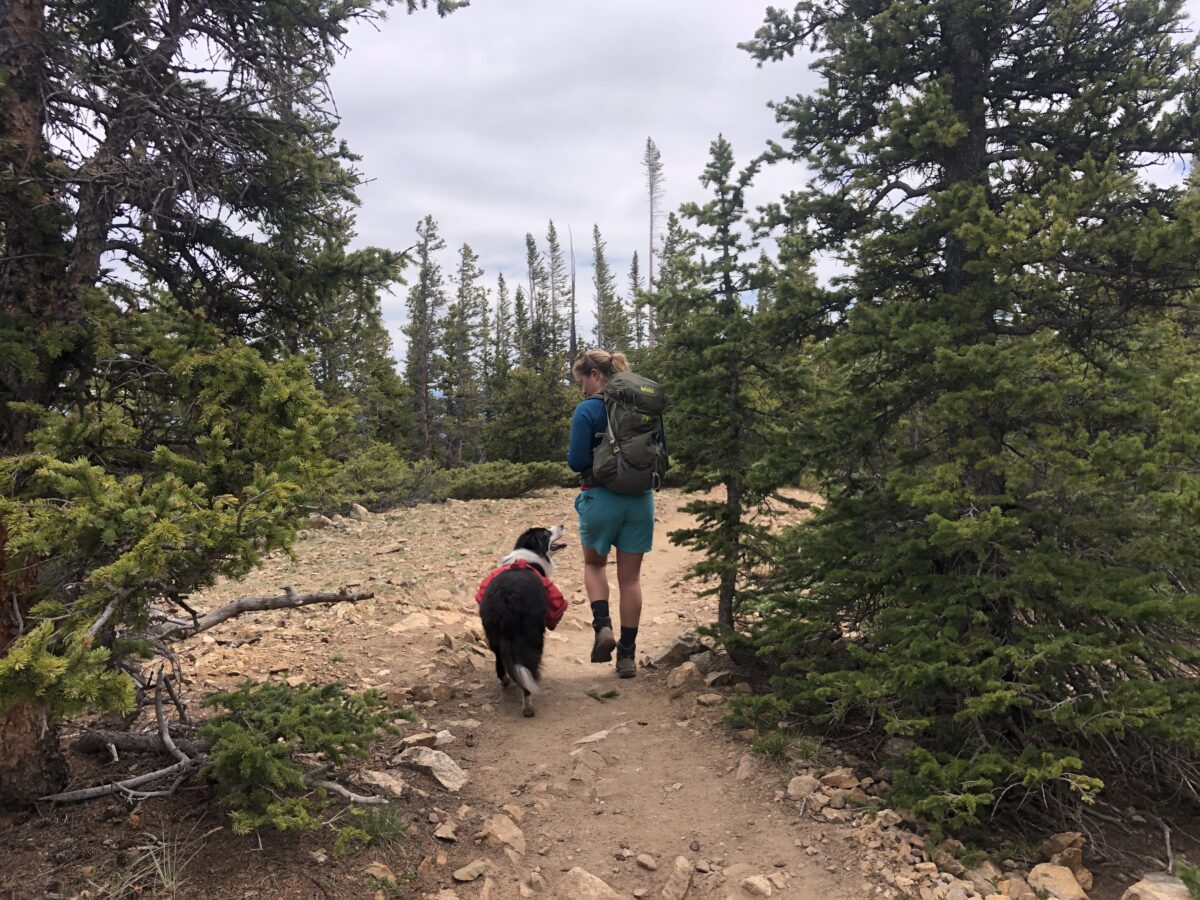I love talking about my job. I truly think I have one of the coolest jobs in the world. When I’m talking to people about the work I do, I always get asked: How do I get started as a conservation detection dog handler?
Of course there’s no one-size-fits-all approach to get into this line of work. I’ll start off by telling you how I did it, and then we’ll zoom out to go over tips and tricks to help you break into this AMAZING field! This is going to be a multiparter, and this first installment focuses on my story.
I first heard about conservation detection dogs back in 2014 when I was a college student. At the time, I was incredibly passionate about tropical ecology, avian cognition, and communication in animals. I wanted to be a researcher, potentially studying the communication of wild parrots or the problem-solving skills of crows. I was also just starting to fall in love with the world of dog training, though I was in denial about it.
Part of me felt like becoming a dog trainer was a “waste” of the fancy education I was getting in ecology at Colorado College—I wanted to be a highfalutin researcher, not a dog trainer. All the same, it was hard to deny that I loved working one-on-one with dogs, and I was a darn good trainer, even back then.
That changed when I heard about the field of conservation detection dogs. Suddenly I realized that there was an entire field where I could have the personalized relationships with dogs that I treasured, utilize my skills as a trainer, pursue a field-going biology job, and make a serious impact in the world of conservation biology.
Almost immediately I started reaching out to conservation detection dog organizations, even though I was still in college and really couldn’t hope for anything but a summer internship unless I wanted to drop out of school—which I didn’t. The responses I got were predictably lukewarm: they’re small organizations that weren’t hiring at the time, and I was nowhere near ready to compete for a coveted position. One organization even told me that they didn’t really hire people who were in serious relationships; another said they preferred people without dog training experience. Their rationale for dating made sense in a way—they explained that they’d seen too many couples fall apart due to the relentless travel schedule. Dejected, I felt like I had to give up on the dream of becoming a conservation detection dog handler unless I broke up with my boyfriend and lied on my resume about how much experience I already had.
So I let the dream sit for a few years, until 2017. At that point, I’d graduated college and gathered several years of experience as a dog behavior consultant at one of the USA’s largest animal shelters. I had some freelance writing and web design experience as well and was still dating the same wonderful guy. I only mention my dating life to underscore that I still felt that conservation detection dog work was off the table for me because I wasn’t single. My dog Barley and I started taking a nosework class with a local trainer, and I realized how much we both loved it. And boy, was he good! So I started to think about conservation detection dog work again.
Not long after, I decided that I wanted to apply for a Fulbright grant to go to graduate school. The proposal I started working on centered on the idea of improving the selection process for finding conservation detection dogs. As part of that proposal, I reached out to a variety of organizations again. This time, rather than asking for a job I was asking specific questions about how to further the field: What problems cause dogs to wash out of your programs? How do you screen for and select dogs for the program? How can we better screen dogs to reduce washout rates? How expensive is it to screen a dog? What does it cost the organization when a dog doesn’t work out?
With help from endless generous editors and mentors, I spent weeks putting together the answers from industry leaders into a proposal to study with Dr. Alex Taylor in New Zealand. You can read that proposal here. I made it to the semifinalist level of selection before an organization reached out to me.
They essentially said that they had an opening and were wondering if I’d like to apply. With the encouragement of my then-boyfriend, I did—and I got the job. I ultimately didn’t get the Fulbright grant, but it all worked out! I spent about 18 months working for that organization. Barley and I deployed as a team to work on zebra mussels, dyer’s woad, and black-footed ferret projects, and I trained and handled a variety of other dogs. Barley also started to train on a few other targets for some studies on the efficacy of detection dogs.
I’m incredibly grateful for the amazing on-the-job education I got during that year and a half. The job was an absolute dream—a mixture of dog training, conservation biology, and outreach and education that’s unparalleled. The organization and I parted ways in fall of 2020, and I started K9 Conservationists shortly after. I am a serial entrepreneur and am excited for Barley and I to strike out on our own—now with Niffler in training—as a conservation detection dog team available for contract.
 Donate
Donate

